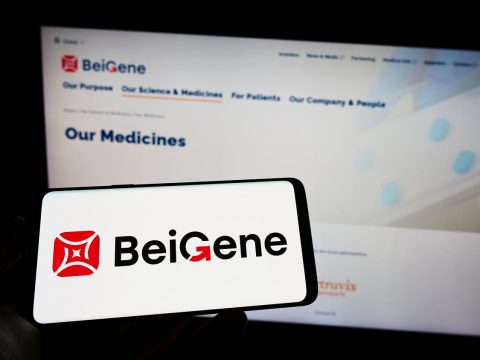Advertisment
Preliminary data shows that BNT 162b1 is safe and immunologically active in COVID-19.- Pfizer and BioNTech
Pfizer and BioNTech announced preliminary data from the most advanced of four investigational vaccine candidates from their BNT 162 mRNA-based vaccine program, Project Lightspeed, against SARS-CoV-2. The BNT 162 program is evaluating at least four experimental vaccines, each of which represents a unique combination of mRNA format and target antigen. The manuscript describing the preliminary clinical data for the nucleoside-modified messenger RNA (modRNA) candidate, BNT 162b1, which encodes an optimized SARS-CoV-2 receptor binding domain (RBD) antigen, is available on an online preprint server at https://www.medrxiv.org/content/10.1101/2020.06.30.20142570v1 and is concurrently undergoing scientific peer-review for potential publication.
Overall, the preliminary data demonstrated that BNT 162b1 could be administered in a dose that was well tolerated and generated dose dependent immunogenicity, as measured by RBD-binding IgG concentrations and SARS-CoV-2 neutralizing antibody titers. The ongoing U.S. Phase I/II randomized, placebo-controlled, observer-blinded study is evaluating the safety, tolerability, and immunogenicity of escalating dose levels of BNT162b1. The initial part of the study included 45 healthy adults 18 to 55 years of age. Preliminary data for BNT162b1 was evaluated for 24 subjects who received two injections of 10 microg and 30 microg, 12 subjects who received a single injection of 100 microg, and 9 subjects who received 2 doses of placebo control. The participants received two doses, 21 days apart, of placebo, 10 microg or 30 microg of BNT162b1, or received a single dose of 100 µg of the vaccine candidate. Because of a strong vaccine booster effect, the highest neutralizing titers were observed seven days after the second dose of 10 microg or 30 microg on day 28 after vaccination.
The neutralizing GMTs were 168 and 267 for the 10 microg and 30 microg dose levels, respectively, corresponding to 1.8- and 2.8-times the neutralizing GMT of 94 observed in a panel of 38 sera from subjects who had contracted SARS-CoV-2. In all 24 subjects who received 2 vaccinations at 10 microg and 30 microg dose levels of BNT162b1, elevation of RBD-binding IgG concentrations was observed after the second injection with respective GMCs of 4,813 and 27,872 units/ml at day 28, seven days after immunization. These concentrations are 8- and 46.3-times the GMC of 602 units/ml in a panel of 38 sera from subjects who had contracted SARS-CoV-2. At day 21 after a single injection, the 12 subjects who received 100 µg of BNT162b1 had an RBD-binding IgG GMC of 1,778 units/ml and a SARS-CoV neutralizing GMT of 33, which are 3-times and 0.35-times, respectively, the GMC and GMT of the convalescent serum panel.
At the 10 microg or 30 microgdose levels, adverse reactions, including low grade fever, were more common after the second dose than the first dose. Following dose 2, 8.3% of participants who received 10 microgand 75.0% of participants who received 30 microg BNT162b1 reported fever of at least 38.0 degrees C. Local reactions and systemic events after injection with 10 microg and 30 microg of BNT162b1 were dose-dependent, generally mild to moderate, and transient. The most commonly reported local reaction was injection site pain, which was mild to moderate, except in one of 12 subjects who received a 100 microg dose, which was severe. No serious adverse events were reported. Given higher numbers of subjects experiencing local reactions and systemic events after a single 100 microg dose with no significant increases in immunogenicity compared to the 30 microg dose level, the 12 participants in the 100 microg group were not administered a second dose. These preliminary data, together with additional preclinical and clinical data being generated, will be used by the two companies to determine a dose level and select among multiple vaccine candidates to seek to progress to a large, global Phase IIb/III safety and efficacy trial.
See- “Phase 1/II Study to Describe the Safety and Immunogenicity of a COVID-19 RNA Vaccine Candidate (BNT162b1) in Adults 18 to 55 Years of Age: Interim Report”-Mark J. Mulligan, Kirsten E. Lyke, Nicholas Kitchin, Judith Absalon, Alejandra Gurtman, Stephen P. Lockhart, Kathleen Neuzil, et al.,
doi: https://doi.org/10.1101/2020.06.30.20142570 .This article is a preprint and has not been certified by peer review . It reports new medical research that has yet to be evaluated and so should not be used to guide clinical practice.





